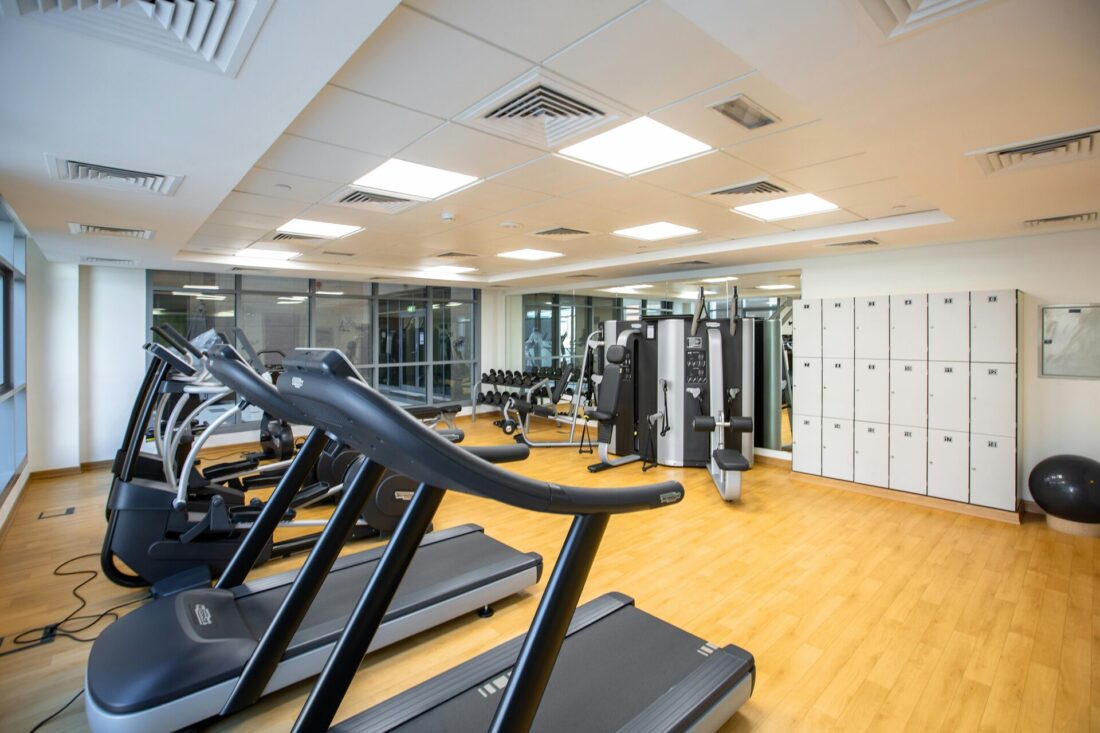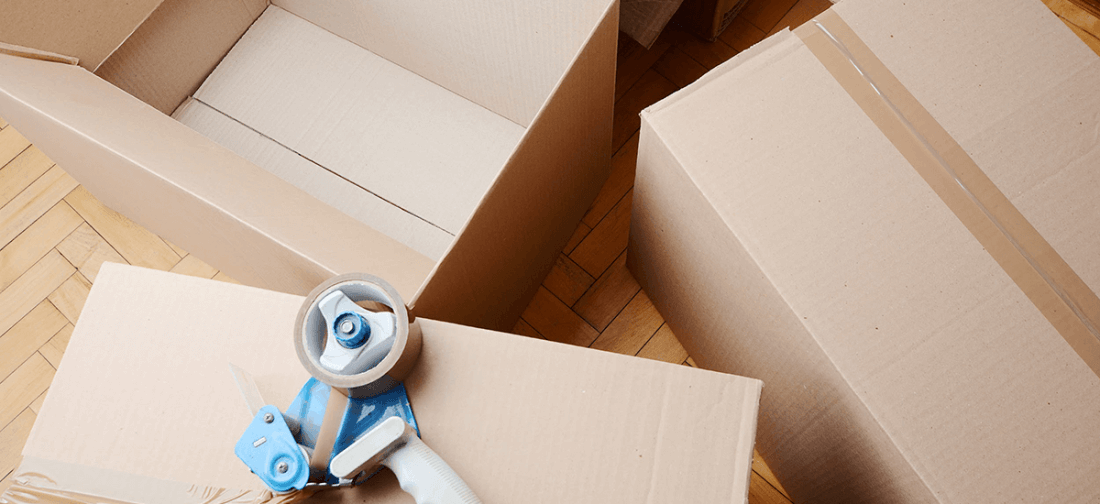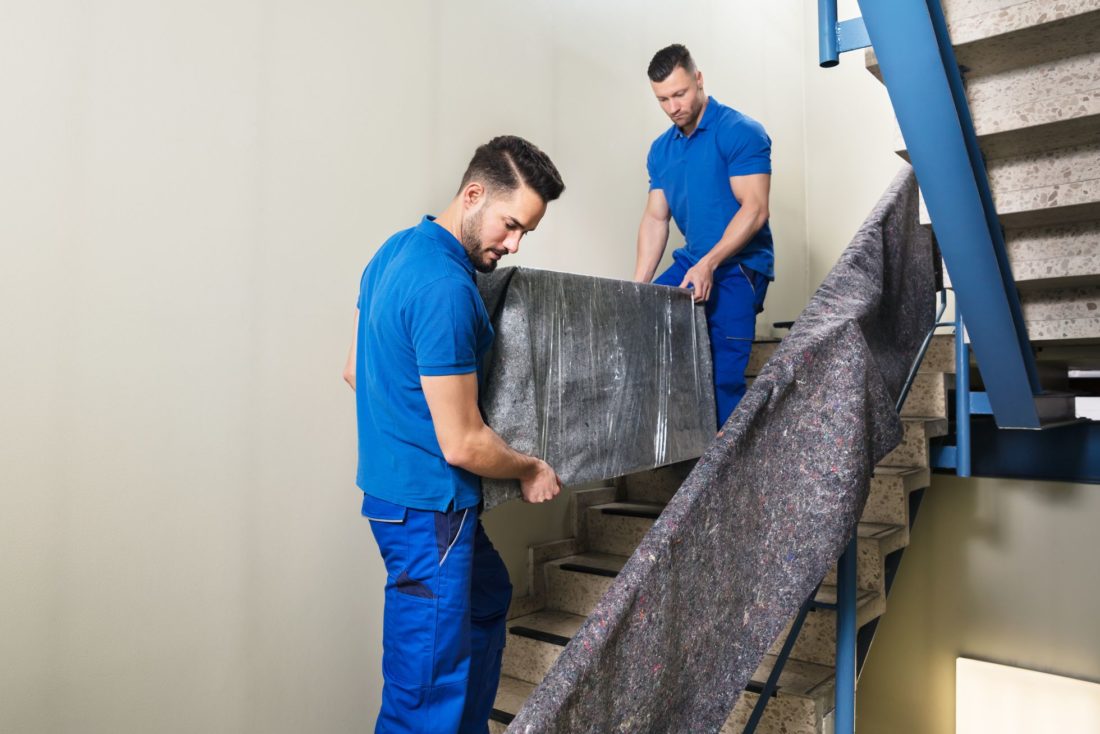Starting your fitness journey often involves discovering the best way to move a treadmill, especially when a new address is on the horizon. But don’t sweat it, gym lovers! Our instructions will turn the difficult task of treadmill relocation into an enjoyable experience. If you’re reshuffling a home gym and working with cross-country movers, learn the ins and outs of how to move a treadmill effortlessly.


How to Move a Treadmill – The Basics
Moving a treadmill requires a blend of careful planning and execution. While hiring professional long-distance movers is the best way to ensure the equipment relocates safely, there are several steps you can take to facilitate the process.
First, consult a manual for specific treadmill disassembly instructions. It’s crucial to detach any removable parts and secure loose cords to prevent damage. Next, if the treadmill is foldable, lock it in the closed position. For non-foldable models, using a furniture dolly can make transportation easier.
Ensure the treadmill is properly padded and covered to protect it during the relocation. Remember, whether you’re working with movers or handling the move yourself, the key is to move slowly and deliberately to avoid injury and ensure everything reaches its new home in perfect condition.
Inspect the Treadmill’s Features
When preparing for exercise machine relocation, it’s crucial to inspect the treadmill’s features thoroughly. Different types of treadmills come with varying folding mechanisms, weights, and dimensions, all of which play a significant role in how they are relocated.
For instance, a compact folding treadmill requires different handling compared to a heavy-duty non-folding model. Identifying these features aids in creating a comprehensive relocation list, ensuring that each step is tailored to the specific type of equipment.
For foldable treadmills, understanding how to engage and secure the folding mechanism is key.
On the other hand, heavier treadmills may require additional manpower or specific equipment to relocate efficiently. Knowing the exact dimensions helps in planning the space needed in the vehicle and navigating through doorways and hallways.
Gathering Necessary Moving Supplies
Securing the right moving supplies is fundamental for packing efficiently and protecting the equipment. Different packing materials serve unique purposes. For instance, moving blankets are essential for shielding the device from scratches and dents. They provide a cushioning layer that absorbs shocks and impacts during transit.
Straps are equally important, as they secure the treadmill to the dolly and keep it stable, preventing any unwanted movement that could lead to damage. Using a sturdy dolly is crucial, especially for heavier models, as it facilitates safe and efficient transportation.


How to Ensure Safe Moving Conditions
What’s the main issue when relocating large items? Most people would name one of three things – causing injuries, mistakes, and damage to the item. One of the key aspects of preventing relocation mistakes is to assess the environment. Clear the path of any obstacles and secure loose rugs or cords that could cause trips or falls. It’s also important to use proper lifting techniques. Bend at the knees, keep the back straight, and lift with the legs, not the back. This reduces the risk of personal injury.
If the treadmill is particularly heavy, don’t hesitate to ask for assistance or use a dolly. Another crucial point is to be aware of the treadmill’s dimensions and the space through which it must pass, including doorways and staircases. Taking these precautions not only ensures personal safety but also protects the equipment from damage.
Disconnect and Secure Electrical Components
Before transportation, there shouldn’t be any fear of relocating if you’ve secured all electrical components. Begin by unplugging the treadmill from the power source. If there are any batteries, remove them to prevent any power-related accidents.
Secure the power cord by wrapping it and taping it to the body of the machine to prevent it from dangling or snagging. If the treadmill has a console or other detachable electronic components, consult the manual on how to safely remove and pack them.
Use bubble wrap or similar protective materials to safeguard these parts. Ensuring that all electrical components are disconnected and securely packed not only contributes to treadmill transportation safety but also helps to avoid potential electrical hazards and damage to the machine’s electronic system.


Follow Step-by-Step Disassembly Instructions
When relocating to another state, following a detailed process for disassembly is crucial to make relocation easier. Start by referring to the treadmill’s user manual for specific disassembly instructions, as different models may have unique requirements.
Generally, begin by removing smaller components such as the console and handles. Carefully unscrew these parts and keep all screws and bolts in a safe place. Next, if the treadmill’s frame is foldable, fold it and secure it with relocation straps. For non-foldable models, disassemble the larger parts like the running deck.
Proper disassembly not only makes the equipment more manageable to transport but also minimizes the risk of damage.
How to Organize and Label Disassembled Parts
Organize and label the disassembled parts to reduce the complexity of reassembling the setup and ensure no pieces are lost during the relocation process. There are different methods for organizing and labeling. However, choosing something that works for you can lead to easier reassembly later. Here are some tips that can help:
- Use clear zip-lock bags to store small parts like screws, nuts, and bolts. Label each bag with a description of where the parts belong.
- Apply labels to larger components, indicating their position and orientation (e.g., “Console Top”).
- Take photos of the fitness equipment before and during disassembly. These can serve as a helpful reference when reassembling the machine.
- Keep cables and cords neatly coiled and labeled to prevent tangling and confusion.
- If parts are particularly heavy or fragile, label them with handling instructions to prevent things from breaking.
- Create a detailed inventory list of all parts and components for easy tracking.
What Are the Best Techniques for Carrying a Treadmill
Using proper heavy lifting techniques is crucial, much like when relocating furniture, to ensure a stress-free relocation. The key is to maintain good posture – keep the back straight, bend at the knees, and lift with the legs rather than the back. This reduces the risk of injury. When lifting treadmills, it’s advisable to have at least two people, one at each end, for balanced handling.
Ensure a firm grip on the most stable parts of the machine, typically the frame or the base. If the setup is foldable, make sure it’s securely locked in the folded position. Communication between the carriers is essential, especially when navigating turns or moving through narrow spaces.
Plan the route and clear any obstacles to avoid unexpected challenges. These practices not only protect the individuals involved in the move but also safeguard the equipment from accidental drops or collisions.
How to Carefully Navigate Through Doors and Stairs
Navigating treadmills through doors and stairs requires planning and execution to prepare for a relocation. Measure the dimensions of the treadmill and compare them with the doorways, hallways, and staircases it needs to pass through. This helps to determine if partial disassembly is necessary.
When moving through tight spaces, tilt the treadmill at an angle that allows for easier maneuvering, and always move slowly to maintain control. On stairs, it’s best to move it end-over-end in a controlled manner. Make sure the path is clear of any obstacles, and use spotter(s) to guide and stabilize it.
Employing furniture sliders under the treadmill can help in smoothly sliding it across flat surfaces. Protective coverings on door frames and stair edges can prevent damage to both the treadmill and the home. With thoughtful preparation and cautious execution, treadmills can be navigated through challenging spaces safely and efficiently.


Hire Cross-Country Movers to Do the Heavy Lifting
When faced with the task of relocating treadmills over long distances, hiring cross-country movers for the heavy lifting can be a wise decision. To choose a moving company that suits your needs, start by researching companies that specialize in long-distance moving services. These companies, and Long Distance USA Movers is certainly among them, are experienced in handling bulky items like treadmills and often offer additional packing services.
When selecting a mover, it’s essential to check whether the movers are legitimate. Look for reviews and ask for recommendations. This due diligence ensures that you entrust the valuable fitness equipment to a reliable and professional team. Inquire if the company provides specific services for handling fitness equipment, as this can be a key indicator of their expertise in safely transporting such items.


How to Spot Rogue Movers
Evade relocation scams by finding movers who are reliable and knowledgeable about safe transport methods. One of the first red flags to watch out for is a lack of proper licensing and insurance. Legitimate relocation companies should readily provide proof of both.
Be wary of movers who give significantly lower estimates than others – this can be a sign of a potential scam. It’s also important to check for online reviews and testimonials, as a reputable company will have a track record of satisfied customers. If a company lacks an online presence or has numerous negative reviews, it’s a cause for concern.
On top of this, be cautious of movers who demand a large deposit before the relocation or who are not clear about their pricing structure. A professional relocation company will provide a detailed and transparent quote.
Moving Services
Treat yourself with a white glove long distance moving service that’s based on the inventory list and not weight. This means a price guarantee, transparent move costs and premium moving service.
Learn morePacking Service
Sit back and relax, we’ve got packing services covered. We use moving blankets, shrink wrap, bubble wrap and even custom wooden crating. Your stuff will be protected and carefully handled during the move.
Learn moreAuto Transport
Move your car across the country in an open or enclosed trailer – for an affordable fee. We offer car transport as a standalone service, but you can bundle it with your household move and get a hefty discount.
Learn moreTrust Long Distance USA Movers to Be Your Ally When Relocating a Treadmill
We’ve highlighted that moving a treadmill involves key steps such as inspecting its features, following disassembly instructions, employing safe heavy lifting techniques, and careful navigation through challenging spaces. But if you are interested in a hassle-free experience, Long Distance USA Movers is a go-to long-distance moving company.
Specializing in cross-country moving services, we bring expertise and precision to every step of the treadmill’s relocation. Our team ensures that each phase of the move is handled with the utmost care and professionalism. So, for peace of mind during your treadmill’s journey, contact us. We’re dedicated to making the treadmill relocation smooth, efficient, and stress-free.
FAQ
Can I Move a Treadmill by Myself, or Do I Need Help?
Relocating treadmills typically requires assistance due to their weight and size. It’s recommended to have at least one other person to help, to ensure safe handling and to prevent personal injury or damage to the equipment.
How Do I Protect My Floors When Moving a Heavy Treadmill?
To protect floors, use furniture sliders under the treadmill’s legs or base. This reduces friction and prevents scratches. For extra protection, lay down plywood sheets or heavy-duty moving blankets along the path.
What You Should Know About How to Move a Peloton Treadmill?
Relocating a Peloton treadmill involves understanding its specific disassembly process, securing its touchscreen and components, and ensuring stable and careful transportation due to its high-tech features.
What You Should Know About How to Move a NordicTrack Treadmill?
Nordictrack treadmills often have intricate electronic systems and folding mechanisms. Pay attention to the electrical connections and follow the manufacturer’s instructions for safe disassembly and transportation.
Are There Any Parts of the Treadmill That Need Special Attention During Disassembly?
The electronic components, such as the console and wiring, need special attention. Ensure they are properly disconnected and secured. The belt and motor also require careful handling to prevent damage.
How Can I Tell if My Treadmill Needs to Be Disassembled for Moving?
Measure doorways, hallways, and staircases and compare them with the treadmill’s dimensions. If the space is too narrow for the equipment to fit comfortably, disassembly will be necessary.
What Should I Do if My Treadmill Doesn’t Fit Through the Door?
If the setup doesn’t fit, partial disassembly might be needed. Refer to the user manual for guidance on how to safely dismantle the larger sections without damaging the equipment.
How Do I Reassemble My Treadmill Correctly After Moving?
To reassemble, reverse the disassembly steps. Consult the user manual and any photographs taken during disassembly. Ensure all parts are securely fastened and electrical components are properly reconnected.
What Are the Common Mistakes to Avoid When Moving a Treadmill?
Common mistakes include not measuring doorways and staircases before moving, improper handling leading to injuries, neglecting to secure loose parts, and rough handling that could damage the treadmill’s mechanics and electronics.







